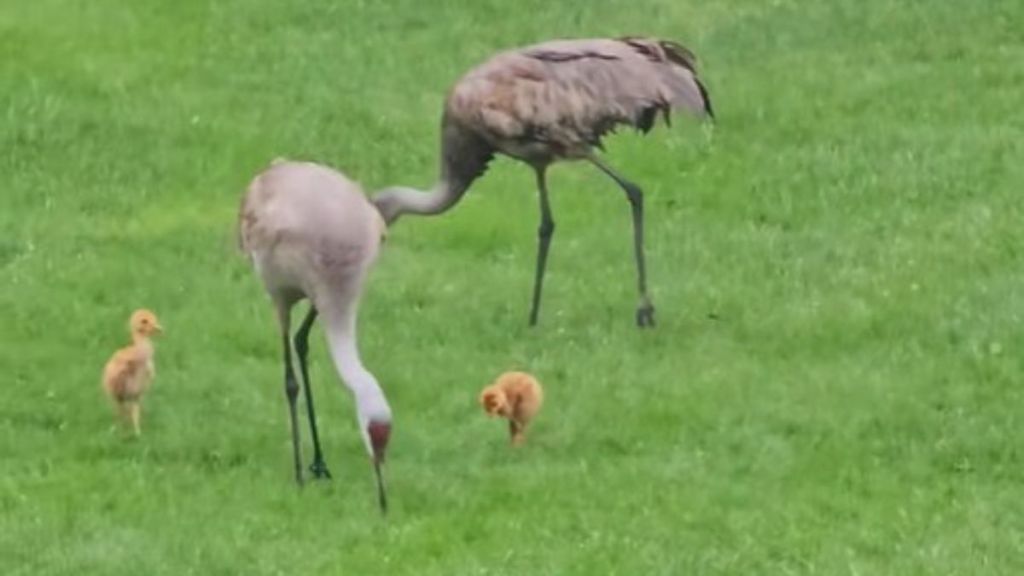It is common to see sandhill cranes in Waterford, Michigan, which is part of their yearly breeding range. Jaime Matthews from Real Life Coaching, LLC, looks forward to the cranes’ annual return. These large birds mate for life and return to the same area, sometimes reusing a previous nest. The same birds have returned to the Matthews’ yard every year. This year, the sandhill cranes brought their babies.
Videos by InspireMore
Although wild, sandhill cranes will become comfortable around the humans they see frequently. Last year, when one of the birds had an injured leg, they used their beak to knock on the back door to ask for help. When the birds returned this year, they knocked (rather insistently) again. There was an incredible surprise awaiting Jaime. The sandhill crane couple were the proud parents of two tiny babies.
In a second video, Jaime recorded the sandhill crane parents teaching their babies how to graze in the grass for bugs. Because she lives near a wetland area, Jaime has a variety of animals in and around her yard. She is working on naming the crane’s parents, several ducks, and Canada geese, and hoping for goslings soon.
Hatchlings can move about and leave the nest within eight hours of birth. They are kept close to the parents, who teach them how to survive. Mated pairs raise and nurture their nestlings over a nine- to ten-month period. This family unit will group with other crane families in flocks during migration. Fledglings will leave their parents as they return to their breeding grounds, although they will usually remain in the same general area.
Maybe the fledgling sandhill cranes will bring their babies around for a visit in two to five years.
Please share.
You can find the source of this story’s featured image here.
Want to be happier in just 5 minutes a day? Sign up for Morning Smile and join over 455,000+ people who start each day with good news.


